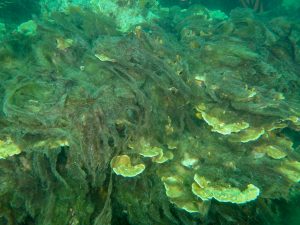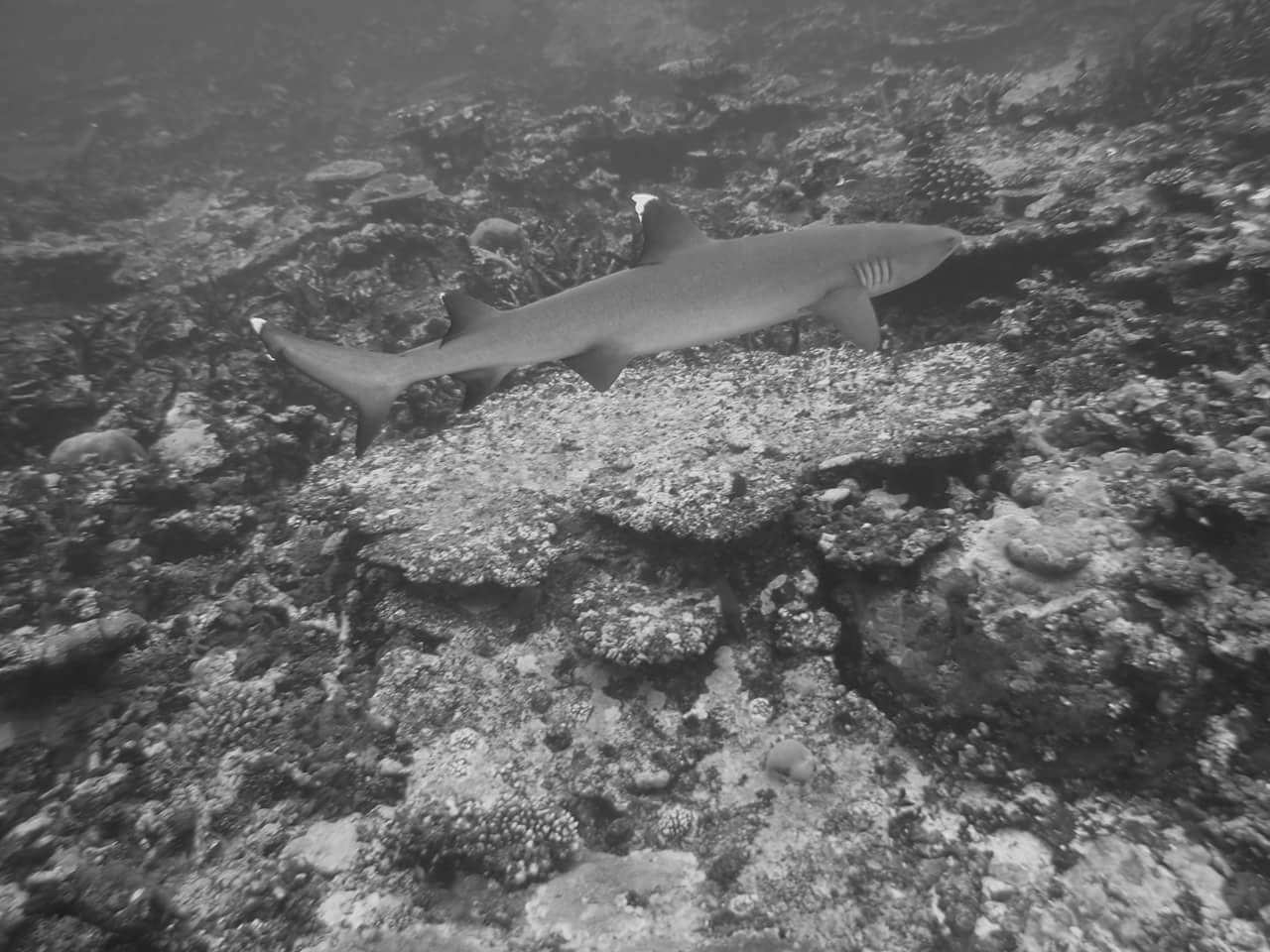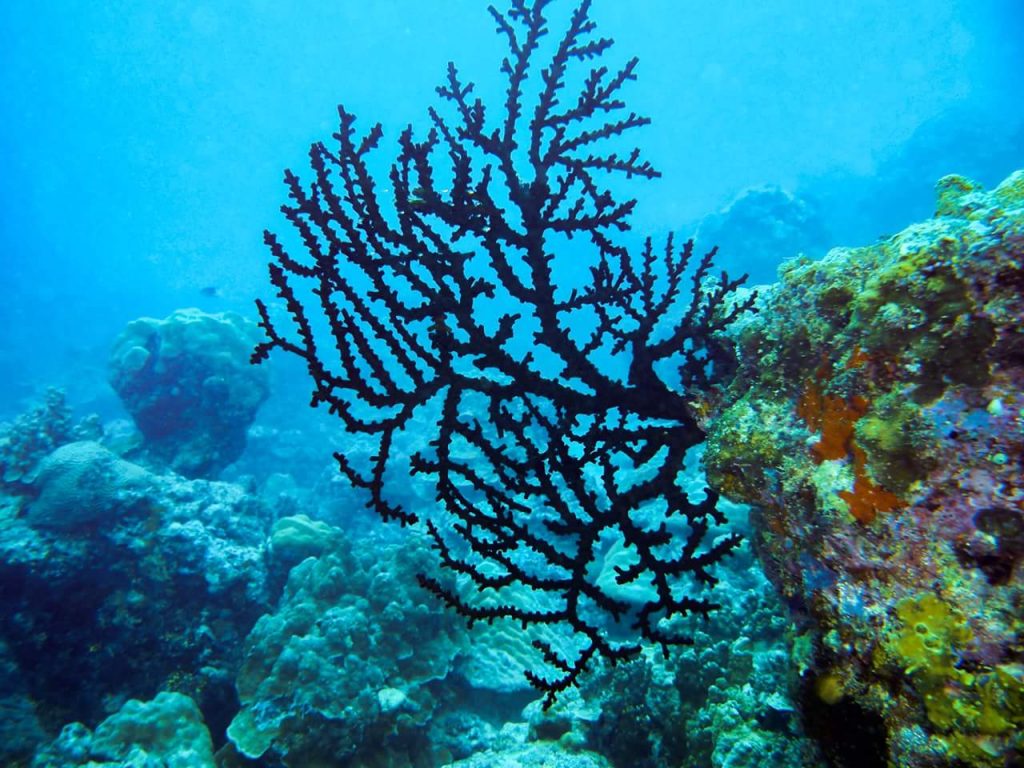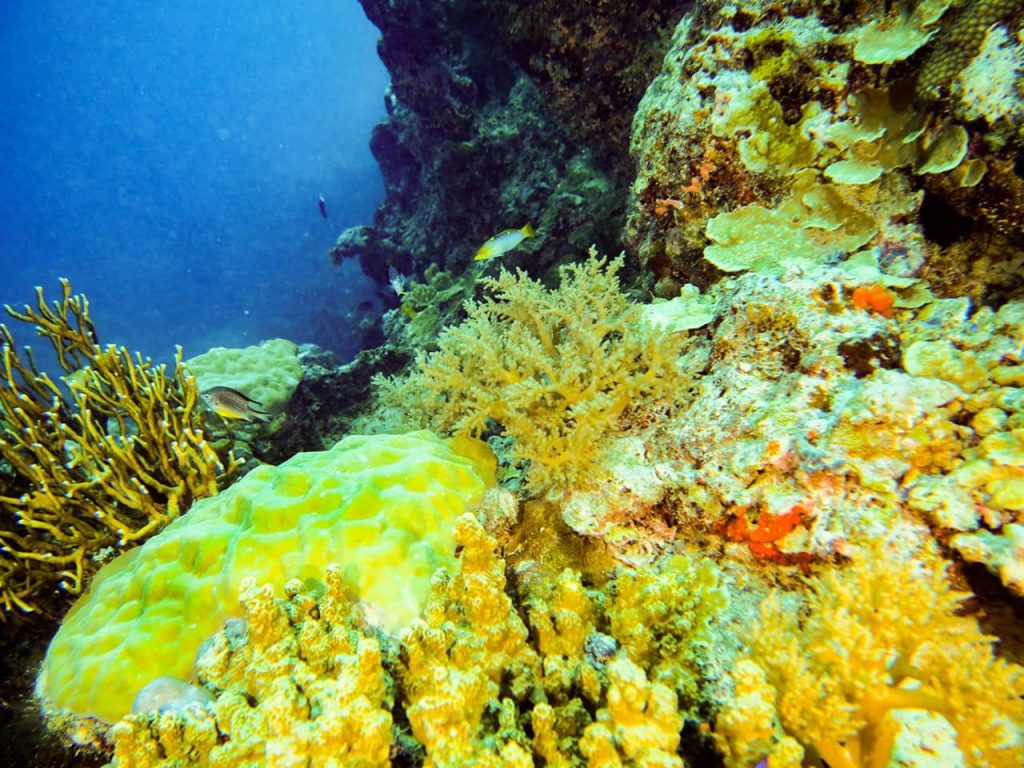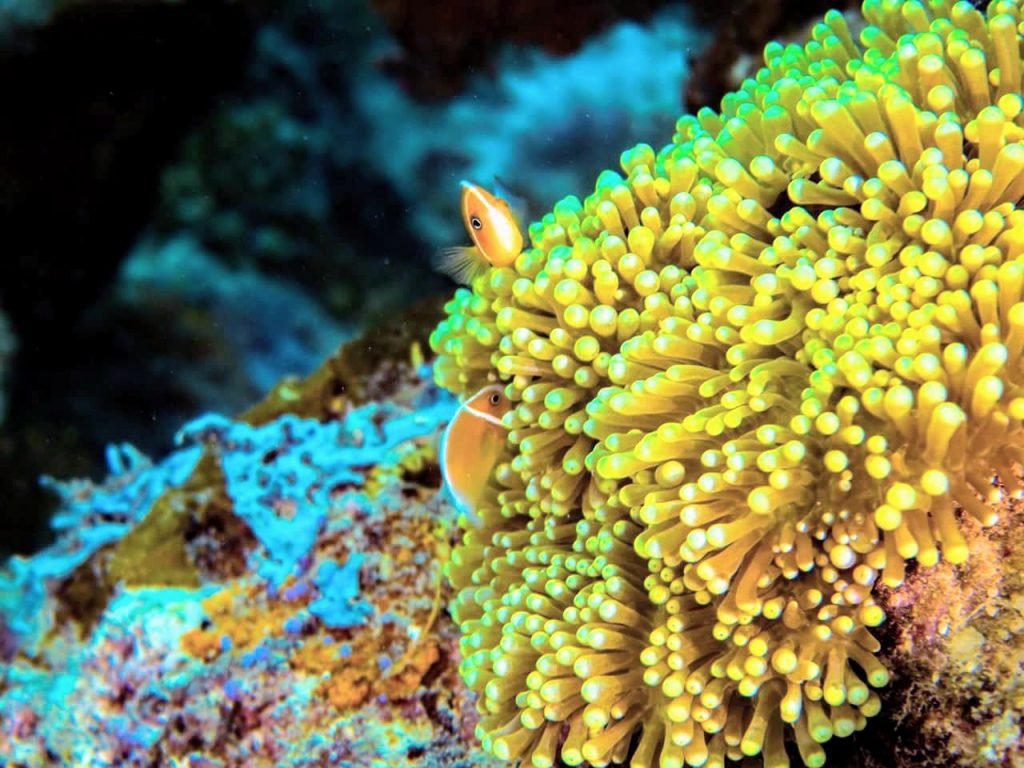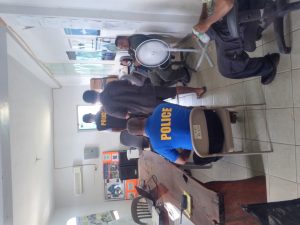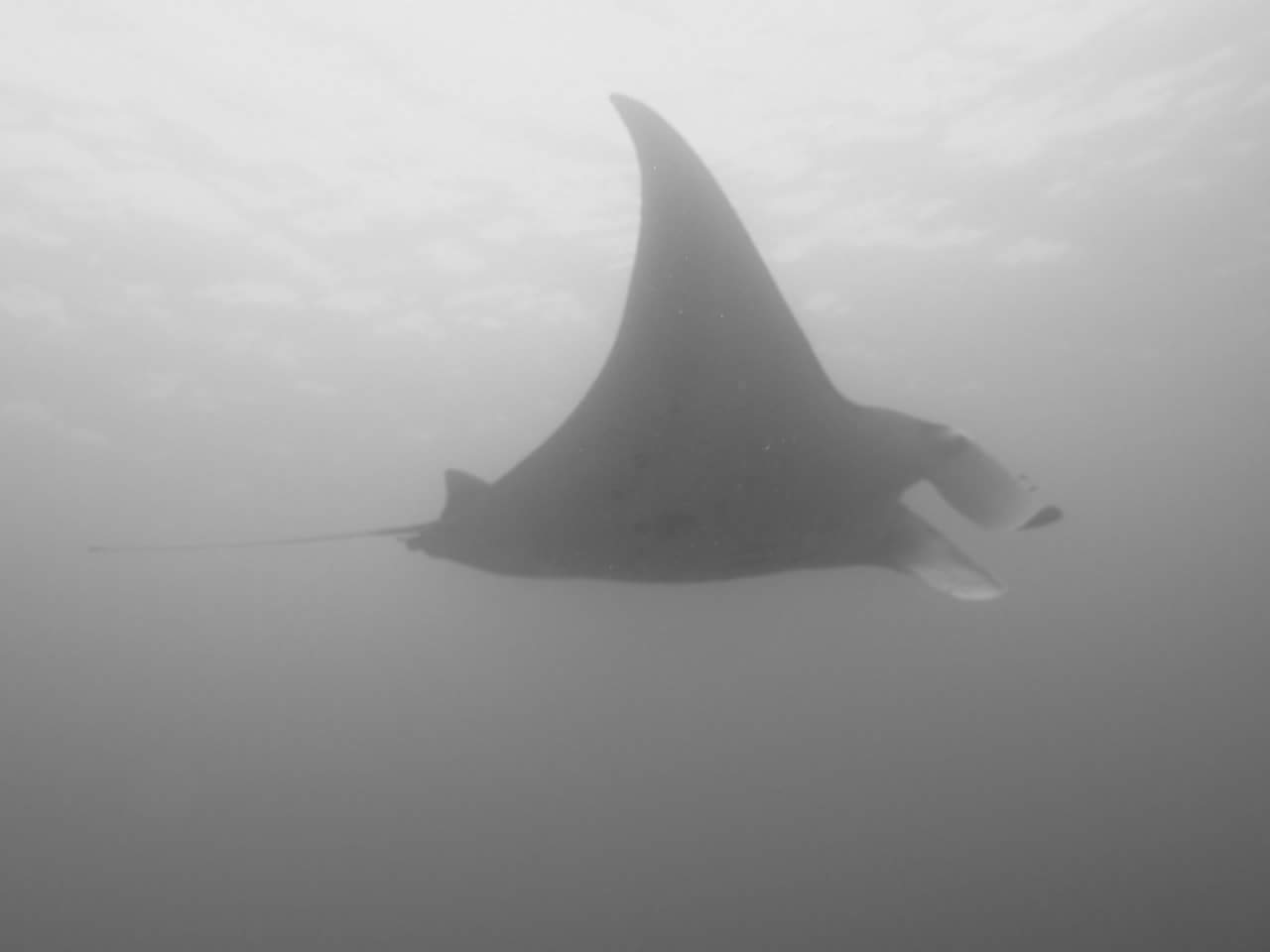I am going to apologize ahead of time for how long this post will be but a lot has happened since my last post and I will put in a lot of pictures. I do leave Pohnpei tomorrow, heading back through Guam and Hawaii (which is scheduled to have a hurricane hit right about the time my flight is supposed to leave) and finally back to SFO. While I’ll be happy to go home (especially since my stomach has not agreed with the food here and I’ve had mild stomach problems pretty much the past two months) I will also be sad to leave Pohnpei and the friends I have made here. Shortly after my last post I spent a week with the Conservation Society of Pohnpei’s dive team and Master’s students from the University of Guam conducting fish and coral studies on multiple sites throughout the island of Pohnpei, I made a training class for the Community Conservation Officers of Pohnpei as well as municipal police and Division of Fish and Wildlife (DFW) officers which I presented last Thursday, and I met with the new Chief of the DFW to hear about the issues they have and what he is doing to overcome them.
Diving is one of my favorite things in the world, its a sense of freedom, exploration, joy, adventure, and bliss, I am often horrible at living in the moment and enjoying the world around me, I frequently worry about events in the future and things in the past, but when I am diving everything goes away, I either think of what I am looking at now, looking for something, or just checking gauges and gear. When diving I am truly in the moment. Sometimes while diving, I try to quiet my breath and listen to the sounds around, the clicking and grinding of the fish as they sing their symphony, the sound of waves overhead, a boat passing nearby, the music of the ocean is a truly amazing sound. In addition to enjoying the auditory magic of the water, I also enjoy the visual beauty of the reefs and am an avid underwater photographer. I believe there are three types of people on the planet, those that you can explain an issue or the importance of an animal to and they will wish to help, those who must see it to care, and those who only care if they can make money off helping. Photography is moving and powerful and has the ability to impact the first two groups.
I was lucky enough to tag along with CSP and University of Guam researchers for a week of coral and fish monitoring surveys, in a way it was beautiful but it was also heartbreaking. Acropora is perhaps the most beautiful genus of coral, with over 149 species described including many species of Elkhorn and Staghorn coral these are the beautiful branching reef building corals that can span over entire reefs. Unfortunately, Acropora is highly susceptible to human pressures like Climate Change. In talking to one of the local dive shop operators, the Staghorn corals died two years ago during El Nino. Once majestic reefs were now little more than algea covered branching rocks, limestone structures that will slowly dissolve in an acid ocean.
Pohnpei is a tall island with a fringing reef that surrounds the entire island and the handful of islands that stick up inside the reef area. On the exterior of the reef much of what we saw was dead Acropora with some small Acropora starting to come back, the inside of the barrier reef was a different story it was covered with Porites, an encrusting coral that tends to survive a variety of conditions. But even the hardy Porites has issues in Pohnpei. The interior of the reef was once pristine, in speaking with one of my colleagues at CSP, he told me about how different it was even in the late 80s. Prior to the late 80s, the entire area inside the reef was crysatal clear and deep with only a few easily visible coral mounts coming near the surface, the clear water made these easy to see and navigate around, fishermen would stand on the coral mounts and spear large fish from the surface, the water was so deep in most areas that even large ships had no problems navigating through even in the now shallow area near CSP’s office what a sight is must have been. My colleague told me a story he heard from one of the first peace corps volunteers, how the water was so clear as they came into what is now the Nett Point that they could see easily hundreds of fish over 80 ft down. Today however development has been the demon that destroyed the reef, upland deforestation and farming has caused Pohnpei’s once clear and drinkable rivers to be filled with silt and animal waste (the water from the waterfall I posted in my fist on island post I later found out, after swimming in the water with an open heal cut, contains leprosy bacteria from pig farms near the top), these now brown and unsafe rivers flow into the inner reef filling it with brownish water. Dredging has stirred up more sediment as coastal development continues in Pohnpei. Overfishing has decimated once abundant reef fisheries forcing fishermen to go out into more dangerous conditions and causing fish populations to plummet in other areas. Now the inner reef is a murky brown with visibility around 10-15 feet in many areas.
As much as the diving is not what it once was and reef degradation is abundant there is good news for Pohnpei too. One of my friends, a Filipino Expat who moved to Pohnpei when she was six told me that up until recently, shark fins were sold at the markets and shark finning vessels would inhabit the waters surrounding the island. Now, the first thing one sees when picking up their bags at the airport is a big mural of a shark and the words “Sharks are protected in Pohnpei” and sharks there definitely are! During my dives here I’ve seen white tips, black tips, and grey reef sharks! Contrary to popular Hollywood-ized belief that sharks are aggressive man eaters, many of the ones I found were shy and would keep their distance, often too far for a good photograph, however, on one dive I was looking at a white tip just out of range of my camera when I turned to find another white tip right next to me, I was able to snap a few photos and it was truly a magical moment!
As I said I love underwater photography so here are a few more of my favorite shots:
But I wasn’t just hear for fun and diving (as much as I wish I was) I was here to work on conservation enforcement issues. Much of what I did was developing a training class for the Community Conservation Officers, Municipal Police, and DFW. I ended up with a Powerpoint over 150 slides with multiple videos, probably an 8 hour class. The day before presenting, I met with the Chief of DFW, he told me about some of the issues they have, lack of a rank structure, lack of funding, and lack of firearms due to post 9/11 firearm shipping regulations. Most of all the Chief told me about a lack of trust between them and the CCOs and the CCOs and them, a theme I had heard recounted many times from many CCOs. I also realized that an 8 hour class would not be appropriate, I ended up developing a separate version of my presentation that was only 80 slides in order to shorten it to a more reasonable two hours. I presented my class for a small group of a handful of CCOs, Two municipal police officers, two DFW Officers, and a handful of CSP employees. After the training portion I went into a short list of recommendations of how to improve the relationship between DFW and the CCOs and we had a short discussion (mostly in Pohnpeian so I’m not sure exactly what was said) about an upcoming get together with the different enforcement groups.
Pohnpei is a hidden gem of sorts, one of the four states of the Federated States of Micronesia the only way to get here from the US is via the Island Hopper flight from Honolulu, this flight leaves early in the morning stops in Majuro and Kwajalein in the Marshall Islands, Followed by Kosrae, Pohnpei, and Chuuk in the FSM and eventually ending in Guam late in the evening. Overnight layovers in Honolulu and Guam are required. This unfortunately means that the flight costs over $2000 from SFO. This is both a blessing and a curse. A blessing because it means Pohnpei hasn’t become overrun with tourists like most of the world, in fact I only met one tourist my entire time here everyone other foreigner was doing some type of aid work, this has allowed Pohnpei to keep much of its culture and small island charm. The curse is that tourists and foreigners bring in money so without them Pohnpei has a lot less money than Guam or Palau, the minimum wage here is less than $2 an hour. Back in California, most law enforcement officers start out making $4000-$8000 a month base depending upon the department here, a Sergeant makes just over $500 a month, a Police Lieutenant here just under $600. Money is always a struggle here in Pohnpei, especially since electricity is about 10x the cost of electricity in California, food prices often also match the cost of long travel needed to get imports here.
Overall my experience in Pohnpei has been amazing and I have met so many great people. I hope I get to come back to Pohnpei someday, hopefully sooner rather than later but for now it is goodbye.


